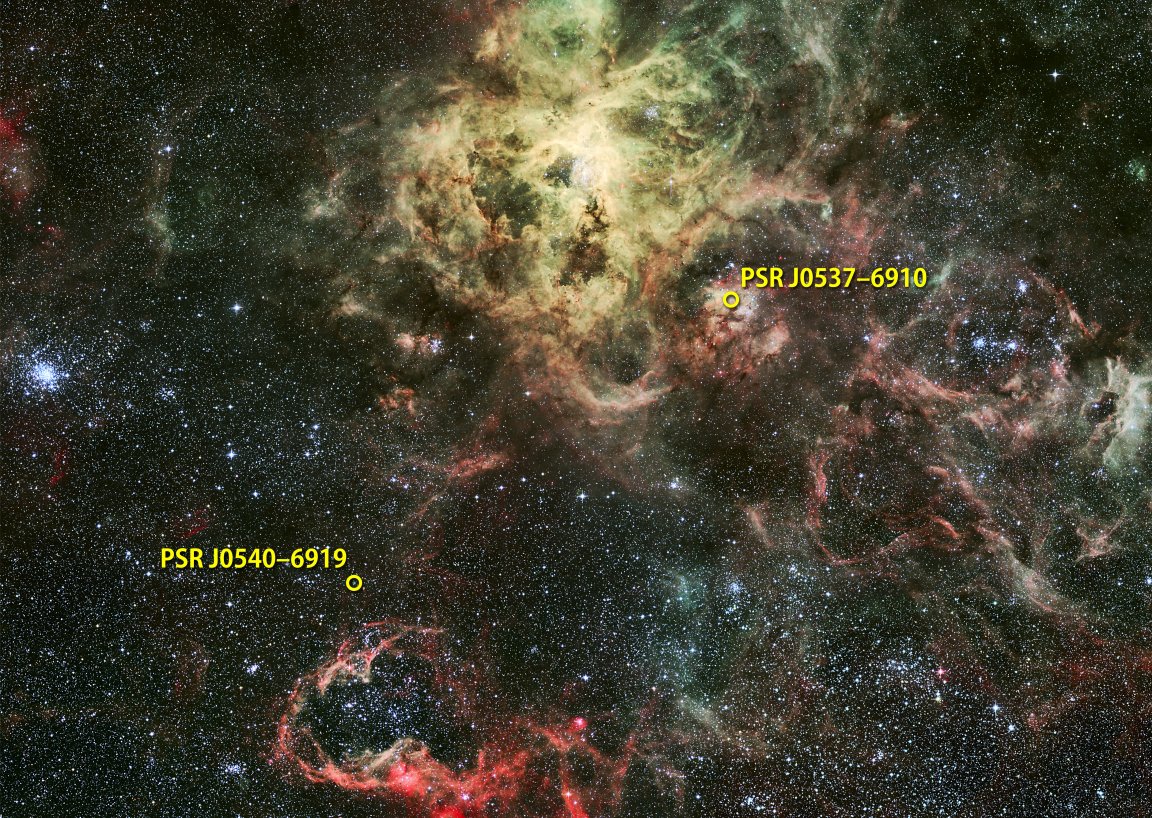
Meet the New Pulsar
Scientists just discovered the most luminous gamma-ray pulsar in the known universe. This discovery also marks the first time that we located a gamma-ray pulsar in a galaxy other than our own. The researchers were working with data from NASA’s Fermi Gamma-ray Space Telescope when they made the discovery and, initially, they were not aware that they were looking at a pulsar. Rather, they thought that they were seeing subatomic particles accelerated by the recent death of a star.
“It’s now clear that a single pulsar, PSR J0540-6919, is responsible for roughly half of the gamma-ray brightness we originally thought came from the nebula,” said lead scientist Pierrick Martin, an astrophysicist at the National Center for Scientific Research (CNRS) and the Research Institute in Astrophysics and Planetology in Toulouse, France. “That is a genuine surprise.”
The pulsar is located in the Tarantula Nebula, which can be found inside the Large Magellanic Cloud, a small galaxy that orbits the Milky Way about 163,000 light-years away.
“The gamma-ray pulses from J0540 have 20 times the intensity of the previous record-holder, the pulsar in the famous Crab Nebula, yet they have roughly similar levels of radio, optical and X-ray emission,” said Lucas Guillemot, coauthor of the paper that was recently published in Science. “Accounting for these differences will guide us to a better understanding of the extreme physics at work in young pulsars.”
What are Pulsars?
Pulsars are what you get when stars die. At least, they are what you get when some stars die.
As massive stars approached the end of their lives, they become unstable and explode. This explosion is known as a “supernova,” and its one of the most powerful events in the universe. Surprisingly, a supernova explosion doesn’t always kill the star in question; rather, often, a neutron star is born.
Neutron stars have a mass that is equal to half a million Earths; however, it’s all crushed down, making the star no larger than your average city. Notably, neutron stars rotate at amazing speeds. Some spin over a thousand times each second. This results in a rapidly spinning magnetic field, which powers beams of radio waves, visible light, X-rays and gamma rays. These beams shoot out from the poles of the star, and if the beam happens to be pointed towards Earth, the neutron star is classified as a pulsar.
In short, pulsars are just neutron stars that have their beams pointed towards Earth.